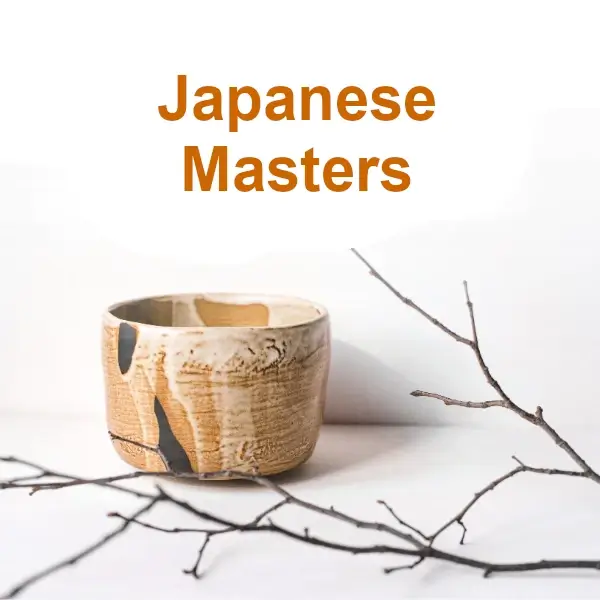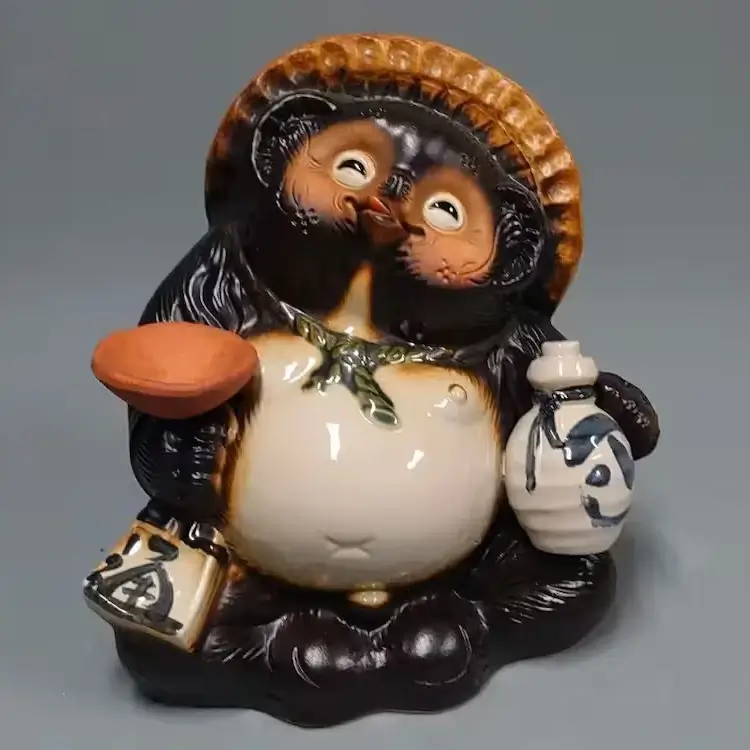Satsuma Ceramics: Why is this porcelain so coveted?
Satsuma ware, originating from Satsuma Province in present-day Kagoshima Prefecture, Japan, is a form of porcelain with a history dating back more than 400 years.
This craft tradition, which began with the arrival of Korean potters in 16th century Japan, has evolved into various styles and types, and is recognized globally for its exquisite craftsmanship and detailed hand-painted designs on porcelain pieces.
Over the centuries, Satsuma porcelain has been synonymous with Japanese craftsmanship, offering pieces ranging from the opulent Shiro Satsuma to the more common Kuro Satsuma, each with its own unique and distinctive charm.
Behold Japanese Satsuma pottery and discover the history, techniques and beauty that make it so prized in the world of art and collecting.
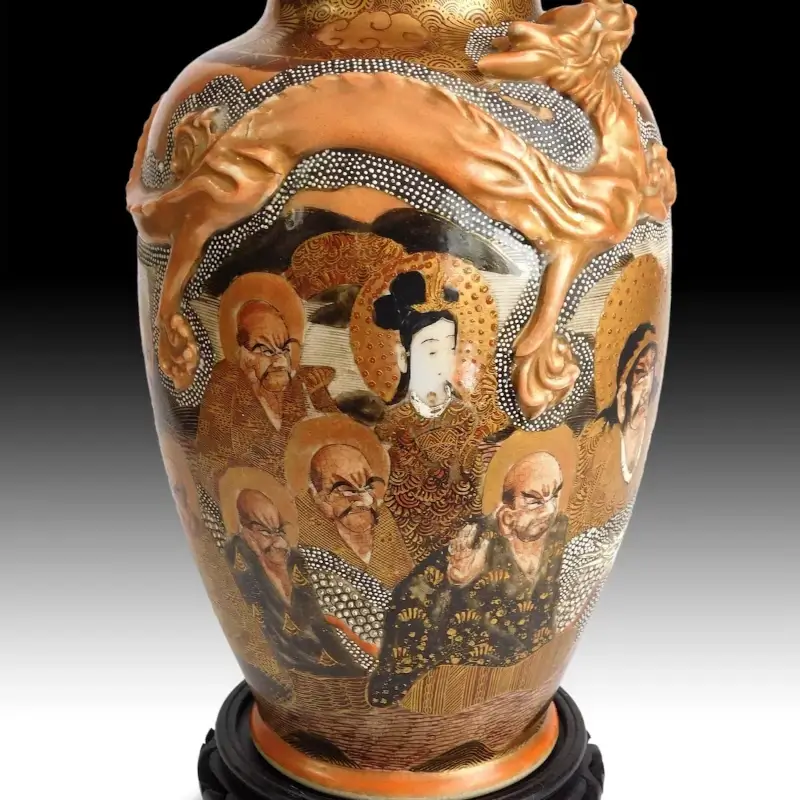
Exploring Satsuma Ceramics: History and Traditional Techniques
Satsuma ware, a treasure of Kagoshima Prefecture, is renowned for its beauty and complexity. Begun in the 16th century after Shimazu Yoshihiro returned from Korea with a group of skilled potters, this art form has evolved over the centuries, adapting and changing, while maintaining its essence and tradition.
Satsuma pottery is distinguished by its diversity, including everything from shiromon, with its transparent glaze and decorations on cracks, to kuromon, known for its iron-rich clay and its use in shochu tasting.
The elaboration of Satsuma pottery is a meticulous and artistic process that begins with the selection of the clay, followed by a first firing at low temperature.
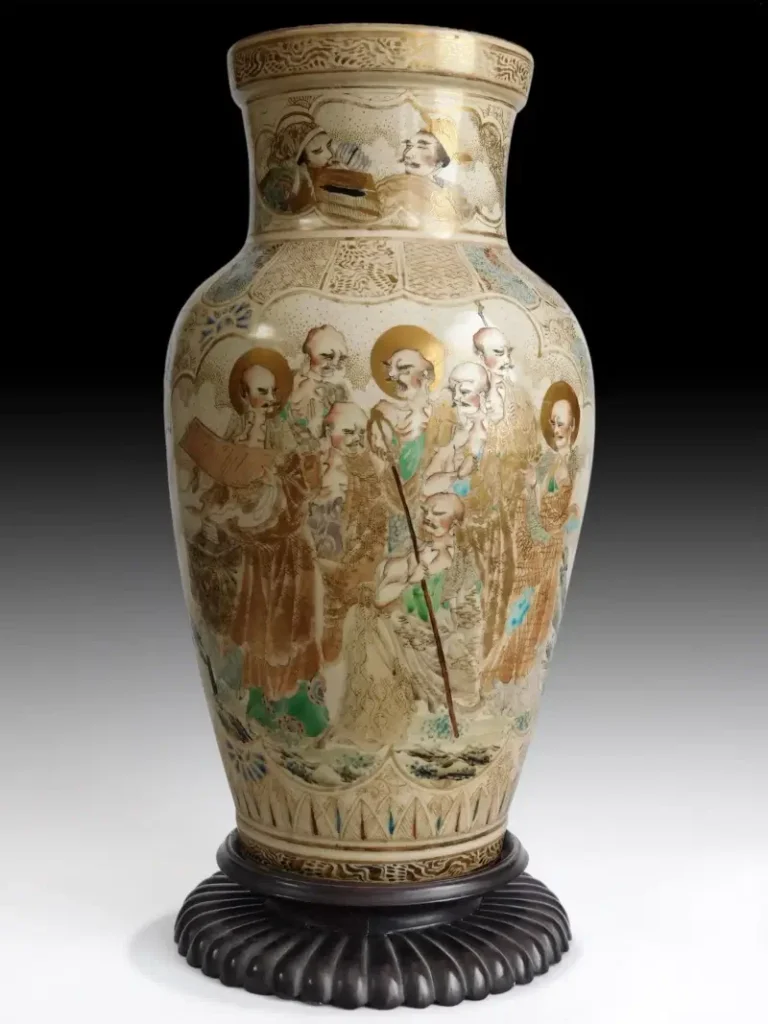
Buddha Museum
A clear glaze is then applied for a smooth, glossy finish. What really sets Satsuma ware apart is its hand decoration with intricate designs, using glaze paints that are then fused to the surface with a final high-temperature firing. This process requires not only a steady hand and an eye for detail, but also a deep understanding of tradition and technique.
The popularity of his pieces, and specifically of Satsuma porcelain transcended borders, especially after its presentation at the Paris International Exposition in 1867, where it captured the imagination of Europe. This Western interest not only introduced Japanese ceramics to a wider public, but also ushered in a new era of cultural and artistic exchange.
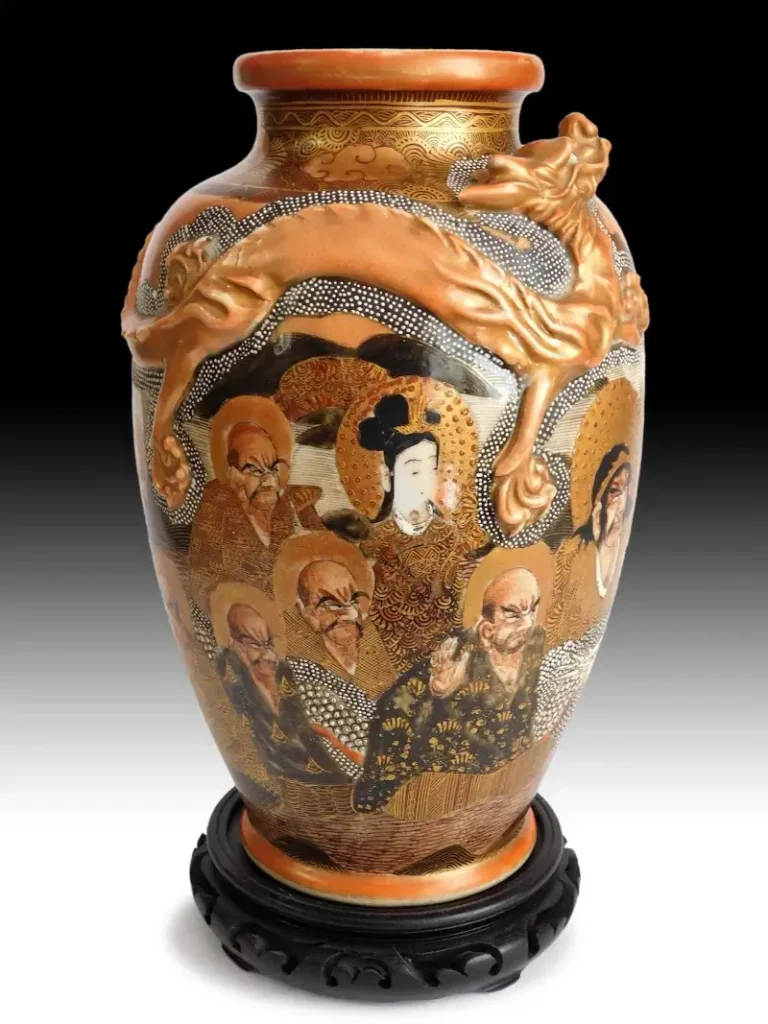
Today, Satsuma’s works continue to be highly valued for both their beauty and historical significance, serving as a bridge between the past and present of Japanese craftsmanship.
Satsuma ware is more than just pottery; it is a symbol of the ingenuity and beauty of Japanese craftsmanship. As we progress through this article, we will explore more about the unique characteristics and designs that make Satsuma pottery a work of art revered around the world.
The Beauty of Satsuma Porcelain: Unique Features and Designs
Satsuma porcelain, known for its delicacy and detail, is an artistic expression that encapsulates the richness of Japanese culture. Its designs, which often include dragons, bamboo, cherry blossoms and the phoenix, are not mere ornaments; each carries deep symbolism, from strength and good fortune to the ephemeral beauty of life and the idea of rebirth and eternity.
This blend of aesthetic beauty with deep cultural significance defines the essence of Satsuma pottery, making it more than just a piece of art; it is a carrier of stories and traditions.
In addition to its symbolic richness, the Satsuma potters’ production technique is remarkable for its complexity and precision. From the application of a clear glaze to the meticulous hand-painting of each design, every step of the process reflects a commitment to artisanal excellence.
As we delve into the following sections, we will further explore the master craftsmanship behind each Satsuma piece and its value not only as an object of beauty, but as a testament to Japan’s rich cultural heritage.
Satsuma Ceramics: Their Cultural and Artistic Value in the Modern World
Satsuma ware, with a history of more than 400 years, remains a prized art form worldwide, especially in Europe. Originating in Japan’s southernmost prefecture, Kagoshima, the ware is divided into Shiro Satsuma, opulently decorated, and Kuro Satsuma, more common as tableware.
This traditional Japanese craft, registered by the Ministry of Economy, Trade and Industry, has captured the admiration of collectors for centuries, both in Japan and internationally, for its exquisite craftsmanship, unique characteristics and rich history.
Satsuma workshops enjoyed great renown throughout the country, and although works from this period are today extremely rare and valuable, usually found in Japanese museums or private collections, interest in Satsuma ceramics continues.
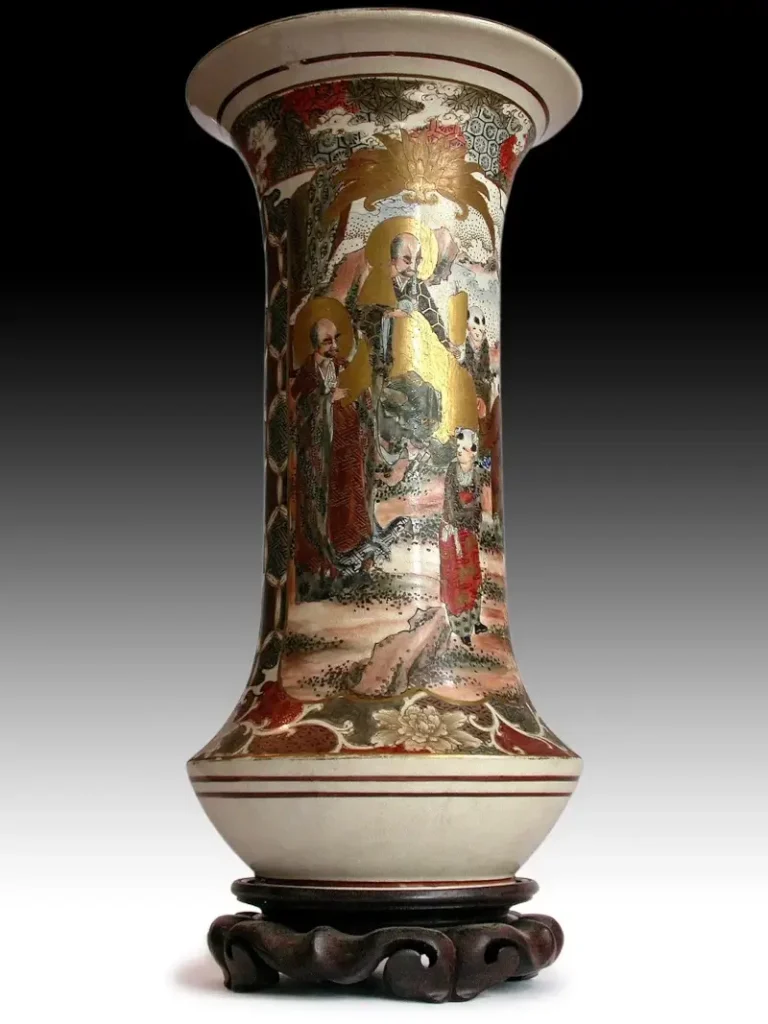
The introduction of Satsuma ware to the West, especially after the Paris International Exposition of 1867, marked a turning point, bringing Japanese pottery and porcelain to be coveted luxuries in America and Europe.
The value of Satsuma ceramics in the modern market varies considerably, from affordable pieces to those valued in the thousands of Euros, making them accessible to a wide range of collectors. Authenticity, age, condition and complexity of design are crucial factors when collecting.
Despite the saturation of the market with lower quality works mass-produced for export, which was seen as a betrayal of Japanese tradition, the refined antique pieces, known as early Satsuma, continue to be highly sought after by collectors.
Satsuma Ceramics: Their Cultural and Artistic Value in the Modern World
The introduction of Satsuma ware to the West during the 19th century marked an important milestone in the expansion of the market for Japanese porcelain. Although mass production led to a depreciation of quality and originality, Satsuma ware became synonymous with pottery during the Meiji era.
The artists who bucked this trend and strove to maintain the quality and tradition of their works are today recognized for their sober style and moderate distribution of motifs.
Today, Satsuma ware adapts to foreign preferences, reflecting the impact of Japanese printmaking and other pictorial media in its designs. This focus on genre illustrations or portraits on the surface marked a new phase in the production of Satsuma ware, although not without criticism for the loss of the traditional Japanese essence.
The focus is now on the recovery and appreciation of antique and refined pieces, known as early Satsuma, which represent the quality and authenticity of this art form.
The best works in Japanese ceramics
Tanuki: The raccoon dog with a magical scrotum and great fortune
Meet the Japanese master Ōgata Kenzan and his art in Ceramics.
